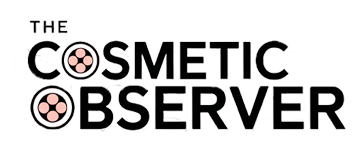The cosmetics industry is adjusting to new pressures across every level of operation. From workforce restructuring to smart packaging and diagnostic technology, the sector is changing shape. This beauty industry shift is not temporary. It is structural and widespread.
In the past week, several moves by global brands and platforms revealed what is shaping the next phase of beauty. Employer branding, immersive packaging systems, and data-based personalization are now active parts of product and business design. Combined, these factors are changing how brands define value, deliver experience, and build trust with consumers.
Talent Strategy Moves Into the Spotlight
LVMH Beauty introduced a new global employer campaign called Where Dreams Become Careers. The message is simple: career development is now part of brand identity. With over 200,000 employees worldwide, the company is putting its internal systems on display.
Talent is no longer seen as a background function. Companies use the workforce visibility to strengthen their public reputation. This includes cross-functional mobility, transparent career path and cultural-first messages. In the competing global beauty market, top candidates want more than a job – they look for objective, development and clear routes.
It’s not about recruiting alone. It is about coordinating the work culture with the public image. In 2025, how a company treats the workforce, becomes a competitive point in the beauty market.
The turn of the beauty industry is now visible in the corporate structure. Since several brands combine internal operations with external messages, the difference between brand and consumer brand is narrow.
Packaging Becomes a System, Not a Surface
LUXE PACK Monaco 2025 revealed major changes to its show layout, including THE PORTAL and THE COL’LAB. These new zones are built to support co-creation and test packaging systems in live settings. The updated infrastructure signals a larger transition: packaging is now treated as a strategic layer, not just a design function.

Focus areas include eco-innovation, sensorial design, digital traceability, and circular materials. This is a response to regulation, consumer demand, and brand cost pressure. Packaging must now carry more function, not just design.
Sustainability also plays a central role. Brands are integrating mono-material packaging, refill-ready systems, and low-carbon material sourcing. Trade shows now prioritize hands-on demonstrations of packaging performance—from preservation to end-of-life.
The shift here is technical. What used to be handled by branding teams is now shared with compliance, logistics, and sustainability units. The beauty industry shift includes this upstream reorganization of materials, process, and supplier visibility.
Diagnostics and Personalization Gain Ground
Several global brands are investing in new tools that scan skin, match shades, and create adaptive formulas. L’Oréal and Universkin are two recent examples using AI and cellular input to shape product fit. These technologies are being developed not only for use in clinics or brand counters but also for integration in direct-to-consumer journeys.
This is no longer a first -class proposal. Low -cost marks add similar techniques to online flow and mobile tools. Some platforms now allow consumers to diagnose through smartphone camera inputs or wearables. The results then match dynamic yogas, tone -specific colors and computing component profiles.
The goal is to reduce returns, increase confidence and convert it once to customers who repeat buyers. Privatization also acts as a discrimination in crowded categories where the shelf view is limited or where e-commerce removes sensory experience.
This part of the beauty industry change is about replacing the trend bike with a computer bike. Algorine marks help to understand the needs that develop in real time, allowing rapid reactions and long -term consumer storage.
Retail Format Adaptation Responds to Younger Buyers
In the United Kingdom, retailers like supercurrants improve physical places to serve young buyers more efficiently. New concept areas such as beauty playgrounds include practical sampling stations, ticket -inspired product areas and interactive discovery displays.
With pricing points at the entrance level and mobile-friendly setups, these formats are targeting General Z and even Jane Alpha buyers. They also show a growing retail pattern: a self -service combination with directed material construction. Some brands are now hosting training programs in the store or pop-up live streams to convert foot traffic to long commitment.
This development reflects the broader beauty industry change. Product testing, colleague and material production are now part of the procurement process. Store suppliers are expected to offer more than inventory – they must provide experience.
Brands Work Across New Structural Layers
This round has moved beyond the surface. Now it has been rooted in three structural areas:
- People: Talent systems become part of the public reputation. Employer brand, workforce policy and internal mobility now affect the perception of external value.
- Packaging: Form, function and footprint are again designed together. Material decision -making points, durability and consumer affect loyalty.
- Prosecutor: AI and diagnostics customers travel the journey again. Personal routine replaces sizes marketing.
Together, how these changes work, create new expectations for this – not just what it looks like. The turn of the beauty industry appears in operation, not just product launch.
Conclusion: The System Is the Strategy
The beauty industry shift in 2025 is not a phase. This is a reconstruction. Marks that work with depth in speed, flexibility and talent, packaging and privatization are installed standard.
There is no product running this moment. Instead, there is a change in how beauty is made, distributed and experienced. Meditation is now on system design, not seasonal reproduction. The marks that are compatible with this structure – not just style – will define the next chapter in global beauty.

